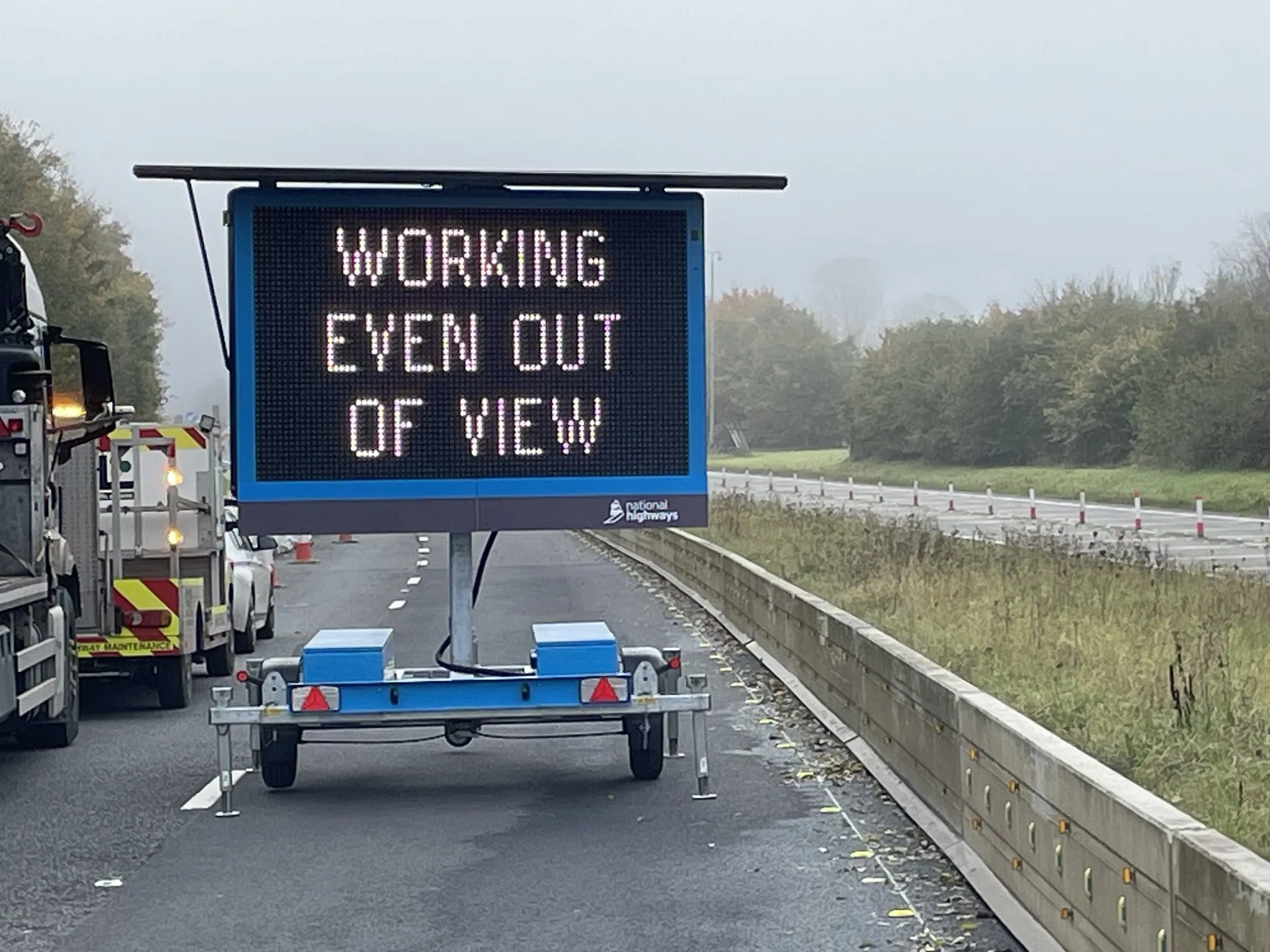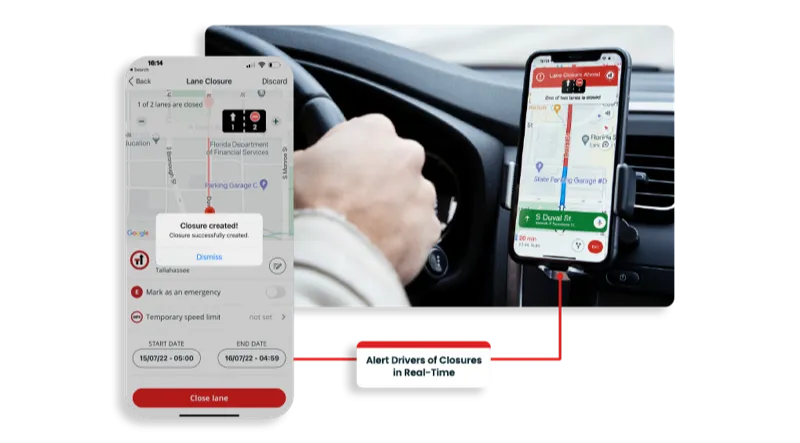
England’s National Highways agency is using variable message signs (VMS) to display non-regulatory messages to indicate that maintenance teams may be out of sight.
This is the first time that such messages have been displayed in an effort to better communicate to drivers that obstacles, diversions or road works lie ahead. The VMS from SRL Traffic Systems is displaying wording not usually used - including ‘Working even out of view’ - to provide an awareness of operations not within eyesight of a driver or outside of the public eye.
Last October, under the initiative from SRL and road maintenance provider Kier, in collaboration with National Highways, the signs were installed in a contraflow section of the A417 Missing Link project. It was done as part of National Highways’ Electronic Boards for Roadworks review and resulting guidelines.
The implementation of the review’s recommendations advances how project teams communicate with road users during construction activities on England’s Strategic Road Network. The highway agency said that the aim of guidelines is to provide project teams with best practice for effective use, monitoring and updating of electronic boards.
Industry research has shown that messages which can be read within four seconds are better for our road users. Previously, signs presented yellow text on a black background; the new signs display concise, friendly messages in white text over a black background.
SRL said that National Highways can now display messages using more options, such as text colour and border additions.
The agency will be able to use the signs more as electronic billboards than traditional VMS, explained Nick Nandhra, project manager for National Highways. “These new signs mark a significant advancement in our goal to enhance road user experiences,” said Nandhra. “Clear communication during roadworks is crucial.”
Kier and SRL are collaborating to maintain signage and provide real-time updates.
Caroline Weller, VMS manager at SRL, said the sign on the A417 Missing Link project is the first scheme to be completed using the agency’s new guidelines.
Gavin Jones, Kier’s project director, said Kier is confident that the signs will assist motorists travelling through the A417 and improve their journeys.
Meanwhile, National Highways said it will continue refining messages based on road user insights, addressing road user concerns and keeping messages relevant throughout each project phase.









